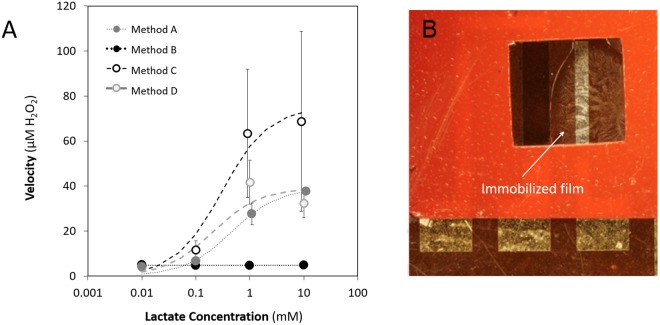Figure 3.
Evaluation of different immobilization methods, BSA and glutaraldehyde (Method A), Chitosan and PVC (Method B), Chitosan alone (Method C) and Chitosan and glutaraldehyde (Method D). (A) Effect of Immobilization Method on Enzyme Binding Kinetics. 15.4 U/mL LOx was immobilized to Kapton films using four unique methods. Error bars indicate standard error of the mean. Note that x-axis values have been offset slightly for better visualization of error bars. The error bars for Method D are smaller than the markers. Trend lines represent least squares fit to the Michaelis-Menten equation. Enzyme kinetic data resulting from Method A resulted in the best fit to the model of the methods tested (R2 = 0.9551). (B) Stability of immobilization Method A demonstrated with a sample that has been tested, rinsed, and dried multiple times, and stored for more than 6 months in phosphate buffer. The material is still clearly adhered to the substrate.

